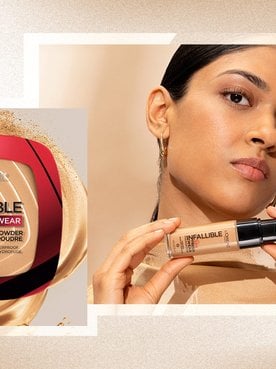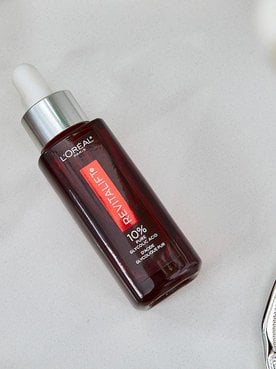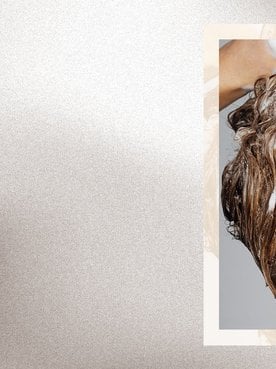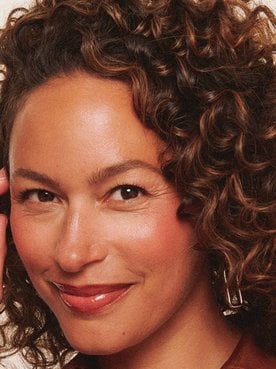When it comes to multitasking skincare ingredients, shea butter is one of the true overachievers. This rich, creamy emollient has been used for centuries and is beloved today for its ability to help nourish, soften, and revitalize the skin. Whether you're looking to add a little extra moisture to dry skin or simply want your complexion to look and feel more supple, the benefits of shea butter are tough to beat. Ahead, we’re breaking down exactly what shea butter is, how it’s used, and some of the most notable shea butter benefits for skin.
What Is Shea Butter?
Shea butter is a plant-based lipid derived from the kernels (or “nuts”) of the African shea tree. Traditionally, the kernels are crushed, roasted, and ground into a paste, which is then kneaded and boiled to separate out the oil. Once cool, the oil solidifies and takes on a rich, buttery texture (hence the name shea butter).
There are two main types of shea butter you’ll come across: raw (or unrefined) and refined. Raw shea butter is what you get immediately after cooling the liquid oil. It’s typically beige or yellow in color and has a nutty, earthy scent. Refined shea butter goes through additional processing before being packaged. This process, which involves treating and filtering the raw material, results in an untinted butter with a neutral aroma and a smooth texture.
Shop the Product
What Is Shea Butter Made From?
As mentioned, shea butter is made from the kernels of the shea tree (Vitellaria paradoxa), which is indigenous to the African continent. It has a thick, rich texture and is naturally high in fatty acids and antioxidants, including vitamin A and vitamin E.
When used topically, shea butter can help smooth and condition skin, leaving it feeling soft and hydrated. The presence of antioxidants also gives it the potential to help defend against environmental stressors, like pollution or dry air.
What Is Shea Butter Used For?
There are a few different ways shea butter can be used, but generally speaking, its main purpose—in skincare, anyway—is as a moisturizer. You can find it in everything from body lotions and lip balms to hair masks and face creams. Its buttery consistency makes it easy to apply, and a little goes a long way. It’s often used on elbows, knees, hands, and feet, but can also be applied to the face, lips, and even the scalp or hair ends for added hydration.
To reap the benefits of shea butter, we recommend looking for skincare or makeup products formulated with the ingredient rather than slathering the raw butter directly on your skin. The L’Oréal Paris True Match Lumi Glotion Natural Glow Enhancer is one of our favorites. The illuminating tinted moisturizer provides instant hydration and leaves the skin with a fresh, luminous-looking glow. You can use it on its own, layer it on under makeup to help prime and add radiance, or apply it to the high points of your face to illuminate your features. It’s even suitable for use on your body, so you can enjoy a natural-looking head-to-toe glow.

Key Benefits of Shea Butter for Skin
Now that you’re caught up on what shea butter is, we can get to what you’re really here to learn: Why you want to use shea butter for skin. Keep reading as we share five benefits of this widely-loved ingredient.
1. Nourishes dry, flaky skin
Shea butter is a natural emollient, making it ideal for relieving dry, rough, or flaky skin. It's rich, buttery texture melts into the skin to deliver long-lasting moisture and a smoother feel. Whether you're dealing with seasonal dryness or frequently struggle with parched skin, shea butter can offer a much-needed dose of hydration.
For long-lasting moisture that won’t leave your skin feeling slick or greasy, try adding the L’Oréal Paris Age Perfect Skin Care Cell Renewal Midnight Cream to your nightly routine. Formulated with shea butter and a patented antioxidant complex, this rich moisturizer melts into the skin, delivering up to 24 hours of non-greasy hydration. Apply it as the final step in your evening skincare routine—come morning, your skin will feel smooth, soft, and deeply moisturized. In the morning, you can hydrate your skin (and score a natural-looking glow) with the aforementioned L’Oréal Paris True Match Lumi Glotion Natural Glow Enhancer.
2. Helps support the skin’s natural moisture barrier
When used topically, shea butter can help reinforce the skin’s natural moisture barrier. This invisible barrier plays a crucial role in retaining moisture and protecting against external aggressors, such as harsh wind or cold air. By helping to maintain this protective layer, products with shea butter can contribute to skin that feels more balanced, resilient, and comfortable.
3. Soothes and calms the skin
According to the Cleveland Clinic, shea butter is rich in natural compounds that can help calm redness and soothe skin discomfort. However, natural compounds in raw shea butter may be irritating for those with sensitive skin. If you’re prone to irritation, be sure to seek out gentle skincare formulas made specifically for your skin type to help nourish and soothe your skin without risking irritation.
4. Provides antioxidant protection
As we mentioned earlier, shea butter is rich in antioxidants, which can help protect your skin against environmental stressors associated with aging, such as air pollution and sun damage. While coating your face in shea butter isn’t likely to erase wrinkles, skincare products with the ingredient could help to support a radiant, healthy-looking complexion. To help care for your delicate eye area (often one of the first places to show the signs of aging), add the L’Oréal Paris Age Perfect Skin Care Midnight Eye Opener to your routine. The antioxidant-rich cream with shea butter helps improve eight visible signs of eye-area skin aging, including sagging, crow’s feet, and wrinkles.
5. Feels gentle on the skin
Generally speaking, shea butter is well-tolerated and non-irritating, even on delicate areas like under the eyes or around the nose. It’s often used in formulations made for sensitive skin and may be a good option for those looking for a natural-feeling everyday moisturizer. However, it’s always a good idea to patch-test before adding any new products to your routine, particularly if you’re prone to redness, irritation, or discomfort.
Shop the Products
Shea Butter vs. Cocoa Butter: How They Compare
While both shea butter and cocoa butter are popular plant-based moisturizers, they have some key differences. Shea butter has a creamier texture and a milder scent, while cocoa butter tends to be firmer and more fragrant, with a scent reminiscent of chocolate. Their benefits may vary slightly, too. As the Cleveland Clinic notes, shea butter is higher in fatty acids than cocoa butter. It also contains vitamin A, which cocoa butter lacks. Both, however, can help trap moisture into the skin to relieve dryness and promote a softer, smoother skin texture.
FAQs About Shea Butter
Is shea butter good for your face?
Many people find shea butter works well as a facial moisturizer, particularly those with dry, mature, or sensitive skin. To keep your skin feeling soft, smooth, and hydrated, look for a facial cream or lotion formulated with shea butter. Keep in mind that for the best results, you’ll want to select a formula designed for your skin type (dry, oily, acne-prone, combination, or sensitive).
Is it okay to use shea butter every day?
Generally speaking, yes, shea butter is suitable for daily use, especially for those with dry skin. However, it’s always a good idea to read the instructions on the package of the product you’re using to get a sense of the recommended application frequency.
What is shea butter good for besides skin?
Shea butter isn’t just a skin savior—it’s also great for hydrating dry hair, soothing itchy scalps, and conditioning lips. Whether used on its own or as part of a beauty formula, it’s a head-to-toe hydrator you’ll reach for again and again.
Next Up: How To Get (and Maintain) Bouncy, Plump Skin
Photo courtesy of L’Oréal Paris







